Model Context Protocol (MCP) finally gives AI models a way to access the business data needed to make them really useful at work. CData MCP Servers have the depth and performance to make sure AI has access to all of the answers.
Try them now for free →Connect to Live SAP Ariba Source Data in PostGresSQL Interface through CData Connect Cloud
Create a live connection to SAP Ariba Source in CData Connect Cloud and connect to your SAP Ariba Source data from PostgreSQL.
There are a vast number of PostgreSQL clients available on the Internet. PostgreSQL is a popular interface for data access. When you pair PostgreSQL with CData Connect Cloud, you gain database-like access to live SAP Ariba Source data from PostgreSQL. In this article, we walk through the process of connecting to SAP Ariba Source data in Connect Cloud and establishing a connection between Connect Cloud and PostgreSQL using a TDS foreign data wrapper (FDW).
CData Connect Cloud provides a pure SQL Server interface for SAP Ariba Source, allowing you to query data from SAP Ariba Source without replicating the data to a natively supported database. Using optimized data processing out of the box, CData Connect Cloud pushes all supported SQL operations (filters, JOINs, etc.) directly to SAP Ariba Source, leveraging server-side processing to return the requested SAP Ariba Source data quickly.
Connect to SAP Ariba Source in Connect Cloud
CData Connect Cloud uses a straightforward, point-and-click interface to connect to data sources.
- Log into Connect Cloud, click Connections and click Add Connection
- Select "SAP Ariba Source" from the Add Connection panel
-
Enter the necessary authentication properties to connect to SAP Ariba Source.
In order to connect with SAP Ariba Source, set the following:
- API: Specify which API you would like the provider to retrieve SAP Ariba data from. Select the Supplier, Sourcing Project Management, or Contract API based on your business role (possible values are SupplierDataAPIWithPaginationV4, SourcingProjectManagementAPIV2, or ContractAPIV1).
- DataCenter: The data center where your account's data is hosted.
- Realm: The name of the site you want to access.
- Environment: Indicate whether you are connecting to a test or production environment (possible values are TEST or PRODUCTION).
If you are connecting to the Supplier Data API or the Contract API, additionally set the following:
- User: Id of the user on whose behalf API calls are invoked.
- PasswordAdapter: The password associated with the authenticating User.
If you're connecting to the Supplier API, set ProjectId to the Id of the sourcing project you want to retrieve data from.
Authenticating with OAuth
After setting connection properties, you need to configure OAuth connectivity to authenticate.
- Set AuthScheme to OAuthClient.
- Register an application with the service to obtain the APIKey, OAuthClientId and OAuthClientSecret.
For more information on creating an OAuth application, refer to the Help documentation.
Automatic OAuth
After setting the following, you are ready to connect:
-
APIKey: The Application key in your app settings.
OAuthClientId: The OAuth Client Id in your app settings.
OAuthClientSecret: The OAuth Secret in your app settings.
When you connect, the provider automatically completes the OAuth process:
- The provider obtains an access token from SAP Ariba and uses it to request data.
- The provider refreshes the access token automatically when it expires.
- The OAuth values are saved in memory relative to the location specified in OAuthSettingsLocation.
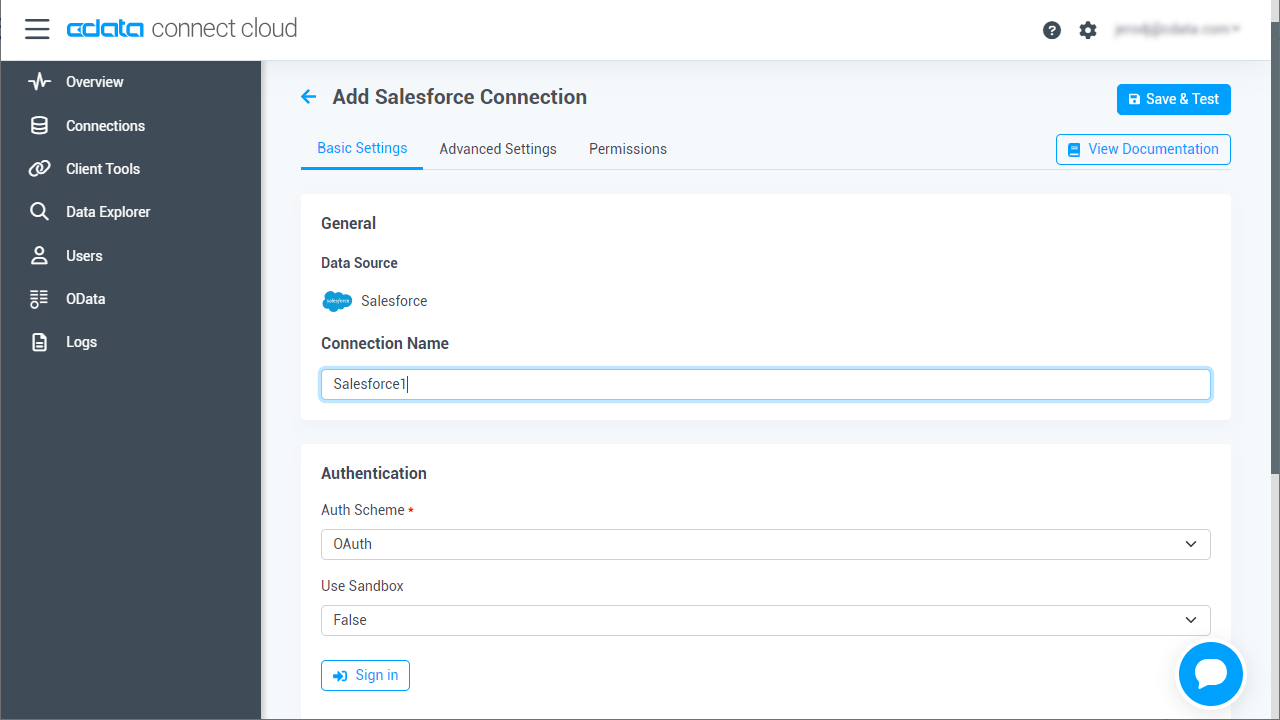
- Click Create & Test
-
Navigate to the Permissions tab in the Add SAP Ariba Source Connection page and update the User-based permissions.
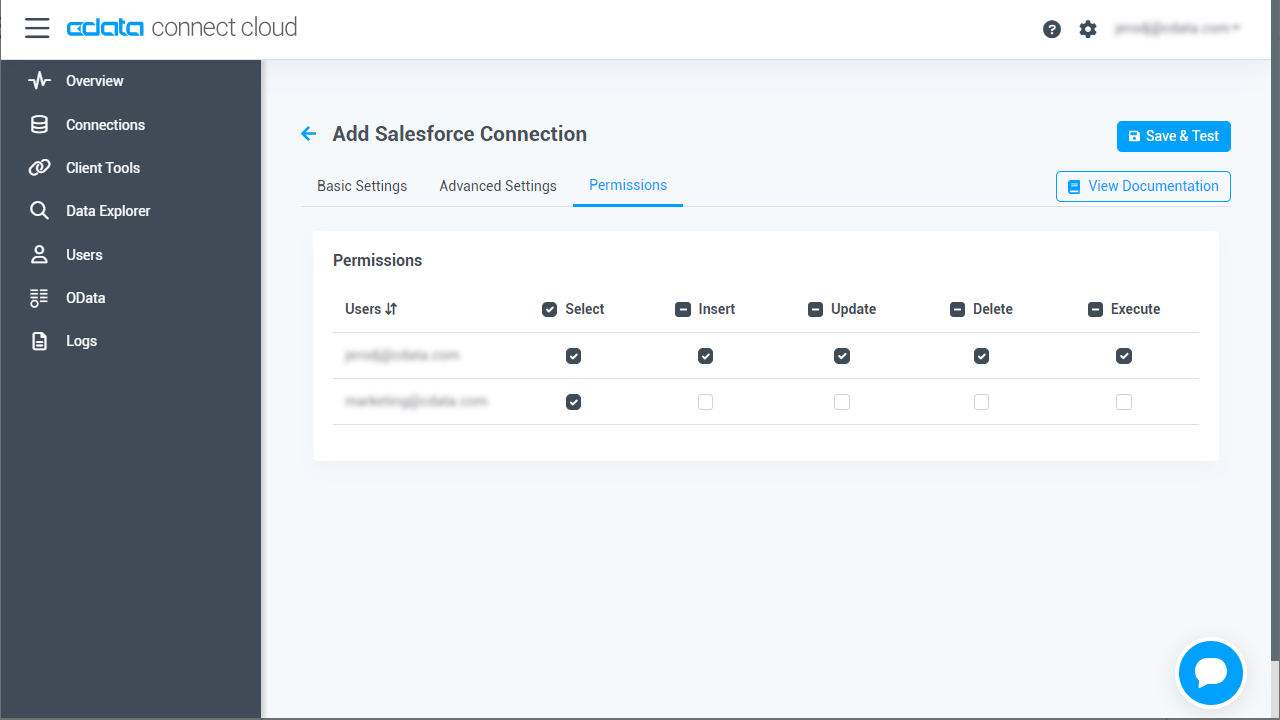
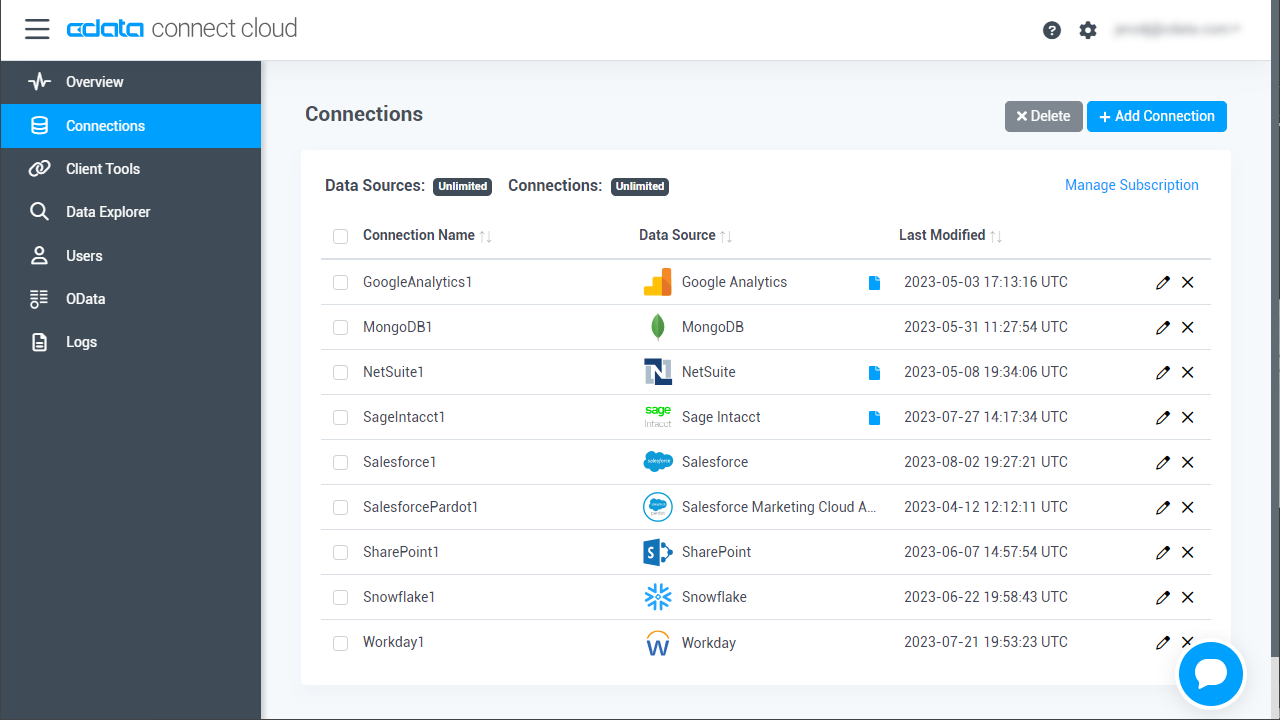
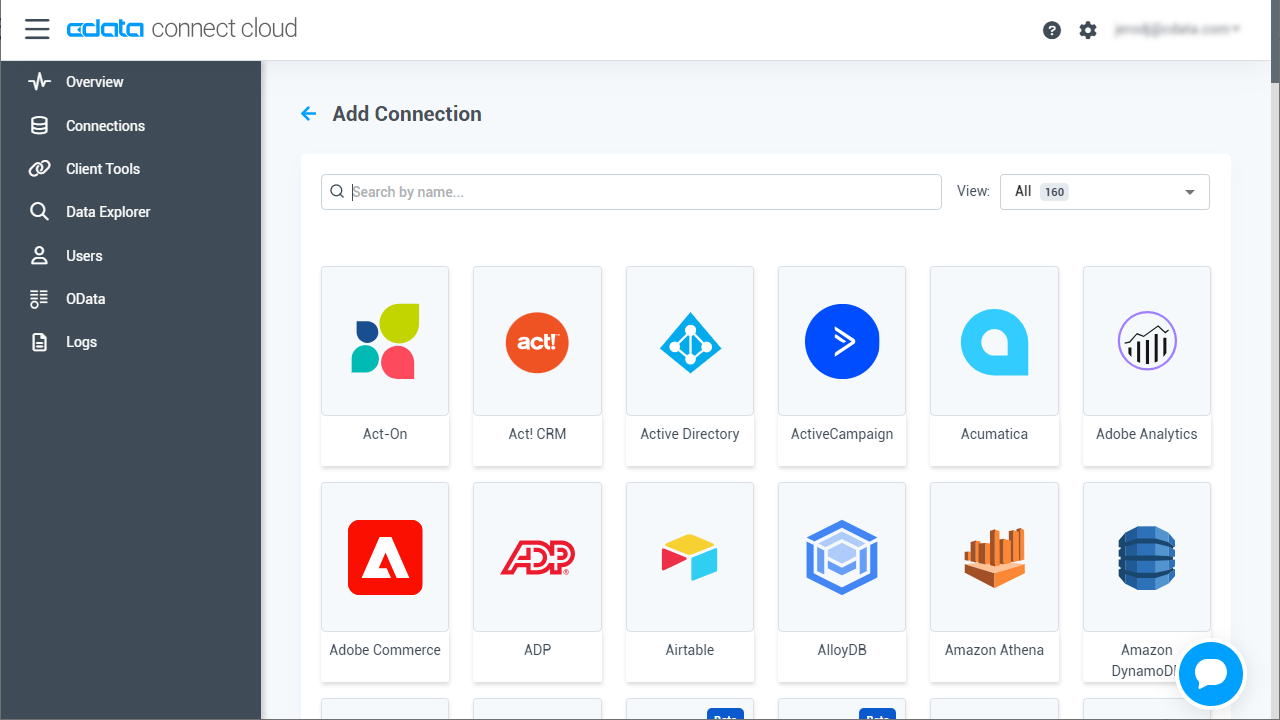
Add a Personal Access Token
If you are connecting from a service, application, platform, or framework that does not support OAuth authentication, you can create a Personal Access Token (PAT) to use for authentication. Best practices would dictate that you create a separate PAT for each service, to maintain granularity of access.
- Click on your username at the top right of the Connect Cloud app and click User Profile.
- On the User Profile page, scroll down to the Personal Access Tokens section and click Create PAT.
- Give your PAT a name and click Create.
- The personal access token is only visible at creation, so be sure to copy it and store it securely for future use.
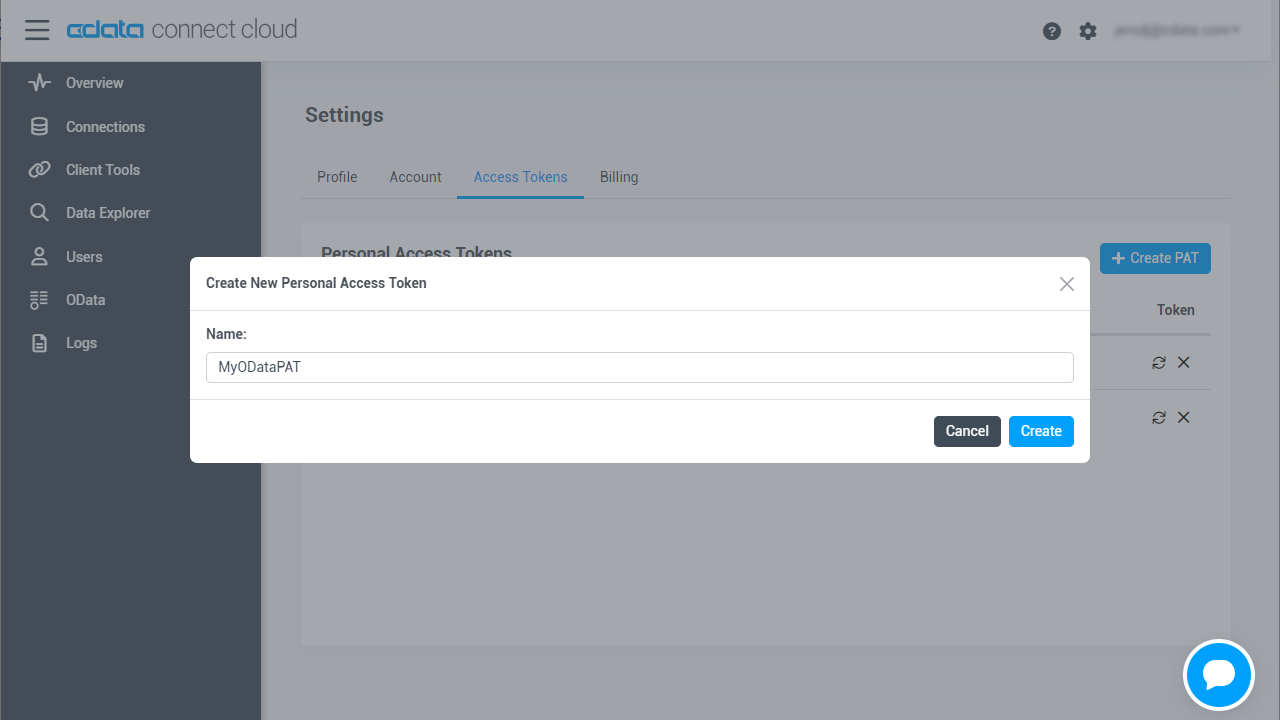
Build the TDS Foreign Data Wrapper
The Foreign Data Wrapper can be installed as an extension to PostgreSQL, without recompiling PostgreSQL. The tds_fdw extension is used as an example (https://github.com/tds-fdw/tds_fdw).
- You can clone and build the git repository via something like the following view source:
sudo apt-get install git git clone https://github.com/tds-fdw/tds_fdw.git cd tds_fdw make USE_PGXS=1 sudo make USE_PGXS=1 installNote: If you have several PostgreSQL versions and you do not want to build for the default one, first locate where the binary for pg_config is, take note of the full path, and then append PG_CONFIG=after USE_PGXS=1 at the make commands. - After you finish the installation, then start the server:
sudo service postgresql start - Then go inside the Postgres database
psql -h localhost -U postgres -d postgresNote: Instead of localhost you can put the IP where your PostgreSQL is hosted.
Connect to SAP Ariba Source data as a PostgreSQL Database and query the data!
After you have installed the extension, follow the steps below to start executing queries to SAP Ariba Source data:
- Log into your database.
- Load the extension for the database:
CREATE EXTENSION tds_fdw; - Create a server object for SAP Ariba Source data:
CREATE SERVER "SAPAribaSource1" FOREIGN DATA WRAPPER tds_fdw OPTIONS (servername'tds.cdata.com', port '14333', database 'SAPAribaSource1'); - Configure user mapping with your email and Personal Access Token from your Connect Cloud account:
CREATE USER MAPPING for postgres SERVER "SAPAribaSource1" OPTIONS (username 'username@cdata.com', password 'your_personal_access_token' ); - Create the local schema:
CREATE SCHEMA "SAPAribaSource1"; - Create a foreign table in your local database:
#Using a table_name definition: CREATE FOREIGN TABLE "SAPAribaSource1".Vendors ( id varchar, Category varchar) SERVER "SAPAribaSource1" OPTIONS(table_name 'SAPAribaSource.Vendors', row_estimate_method 'showplan_all'); #Or using a schema_name and table_name definition: CREATE FOREIGN TABLE "SAPAribaSource1".Vendors ( id varchar, Category varchar) SERVER "SAPAribaSource1" OPTIONS (schema_name 'SAPAribaSource', table_name 'Vendors', row_estimate_method 'showplan_all'); #Or using a query definition: CREATE FOREIGN TABLE "SAPAribaSource1".Vendors ( id varchar, Category varchar) SERVER "SAPAribaSource1" OPTIONS (query 'SELECT * FROM SAPAribaSource.Vendors', row_estimate_method 'showplan_all'); #Or setting a remote column name: CREATE FOREIGN TABLE "SAPAribaSource1".Vendors ( id varchar, col2 varchar OPTIONS (column_name 'Category')) SERVER "SAPAribaSource1" OPTIONS (schema_name 'SAPAribaSource', table_name 'Vendors', row_estimate_method 'showplan_all'); - You can now execute read/write commands to SAP Ariba Source:
SELECT id, Category FROM "SAPAribaSource1".Vendors;
More Information & Free Trial
Now, you have created a simple query from live SAP Ariba Source data. For more information on connecting to SAP Ariba Source (and more than 100 other data sources), visit the Connect Cloud page. Sign up for a free trial and start working with live SAP Ariba Source data in PostgreSQL.

